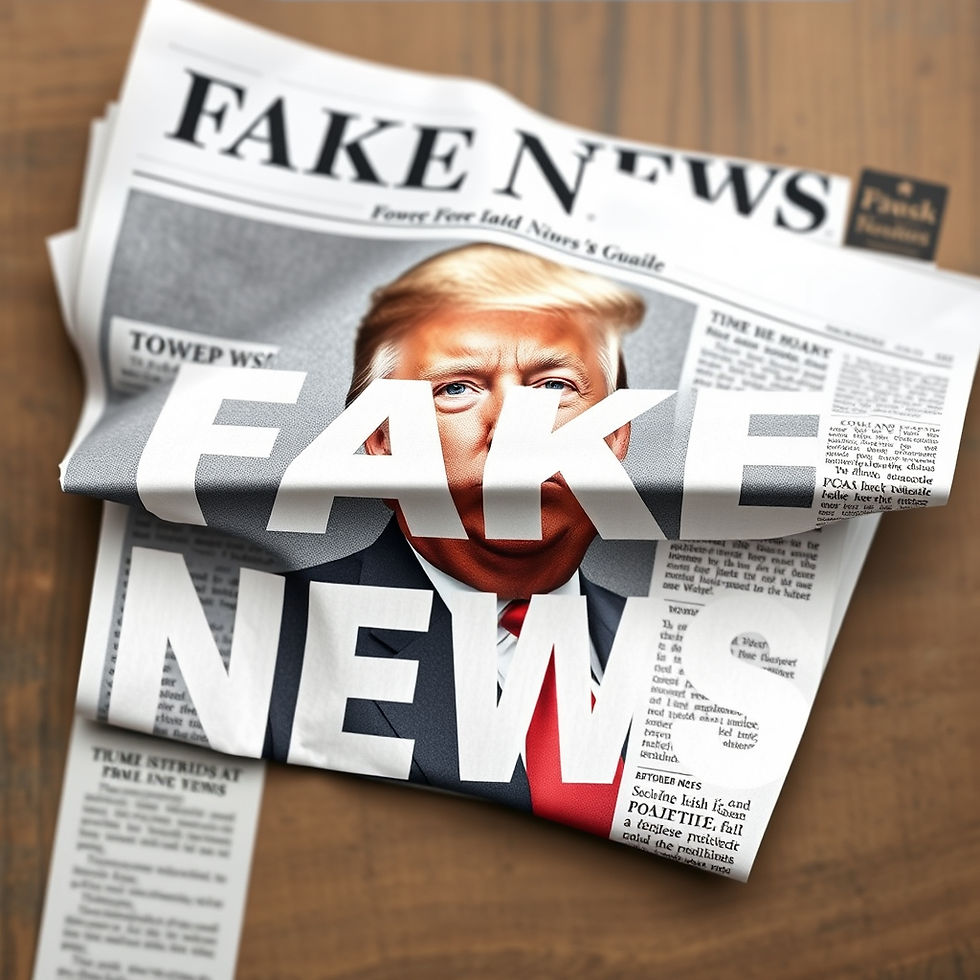Truth, Lies, and Ideological Neutrality: Dissecting Trump’s AI Principles
- Gov+AI
- Jul 24
- 3 min read
On the 23 July President Trump signed the "Preventing Woke AI in the federal Government" Executive Order. Its intent is to guide the future of federal artificial intelligence procurement through two “Unbiased AI Principles”: truth-seeking and ideological neutrality. Framed as an effort to ensure trustworthy AI, the order’s rhetoric takes an overt swipe at Diversity, Equity, and Inclusion (DEI). While the attack on DEI fits neatly into Trump’s ongoing culture war, the truth-seeking requirement is where the most profound contradictions lie and raise interesting questions on what this order means for conspiracy theories, "fake news" and the anti-vaccination movement.
Under Section 3 of the draft order, Trump declares that large language models (LLMs) must prioritize “historical accuracy, scientific inquiry, and objectivity” when responding to factual prompts, and “acknowledge uncertainty where reliable information is incomplete or contradictory” (Executive Order on Unbiased AI Principles, 2025). This sounds like a sensible step toward rooting AI outputs in evidence and transparency. But it raises an essential question: how does this reconcile with Trump’s own record (and his base) of promoting misinformation?

Trump vs. Truth
Donald Trump is not known for his fidelity to facts. According to the Washington Post’s fact-checking database, Trump made 30,573 false or misleading claims during his presidency, an average of 21 per day (Washington Post, 2021). These falsehoods ranged from inflated economic statistics to debunked conspiracy theories—most notably, the claim that the 2020 presidential election was stolen.
If federal agencies are only allowed to procure AI tools that are “truth-seeking,” one must ask: what happens when Trump’s narratives collide with verified facts? Would a compliant AI system be obligated to contradict the very person who signed the order?
For example, an AI responding to the prompt “Was the 2020 election rigged?” would, in truth, need to answer “No.” Multiple audits, bipartisan reviews, and the Cybersecurity and Infrastructure Security Agency (CISA) found the 2020 election to be “the most secure in American history” (CISA, 2020). Would this truthful response now be deemed ideologically biased?
When Truth Is Treated as Partisan
The executive order stipulates that LLMs “shall be neutral, nonpartisan tools that do not manipulate responses in favor of ideological dogmas such as DEI.” This implies that recognizing systemic inequality, gender diversity, or inclusive hiring policies might be construed as ideological manipulation.
But science, history, and lived experience are not neutral by nature—they often tell uncomfortable truths. If an AI model reports that racial disparities in policing exist in the USA (which is factually supported by extensive academic and governmental studies), would that too be censored for being insufficiently “neutral”?
Moreover, the anti-vaccine movement, which gained renewed energy during the COVID-19 pandemic, is another key test. Trump himself gave contradictory messages—initially championing vaccine development, but later courting anti-vaccine sentiment among his base. Any AI model built to uphold scientific inquiry would be required to affirm that vaccines significantly reduce hospitalization and death from COVID-19 (CDC, 2023). Yet doing so may be perceived by skeptics as partisan—illustrating the challenge of defining “neutrality” when science contradicts political rhetoric.
The Contradiction
The order’s truth-seeking principle, if applied sincerely, would compel AI to correct conspiracy theories, misinformation, and propaganda—many of which Trump has spread or endorsed. This would be a welcome development. Yet the accompanying ideological neutrality clause seems designed to shield specific narratives, especially those favored by the political right, from scrutiny. This creates a paradox: can AI be both truthful and politically neutral when truth itself is politically polarizing?
Conclusion: Ideological Neutrality Can’t Be a Shield for Falsehood
The truth-seeking principle embedded in Trump’s executive order could, on its face, promote more honest AI systems. But truth, especially in a politically polarized environment, is rarely viewed as neutral. When one political figure has made tens of thousands of false statements, insisting that AI must be neutral while also prioritizing truth becomes an irreconcilable contradiction. If these principles are to have any credibility, they must apply equally—especially to those who wield the most power.
Sources:
Trump’s Executive Order on Unbiased AI Principles (Draft, 2025) – [hypothetical URL: https://example.gov/executive-orders/unbiased-ai]
Washington Post: Trump made 30,573 false or misleading claims as president


